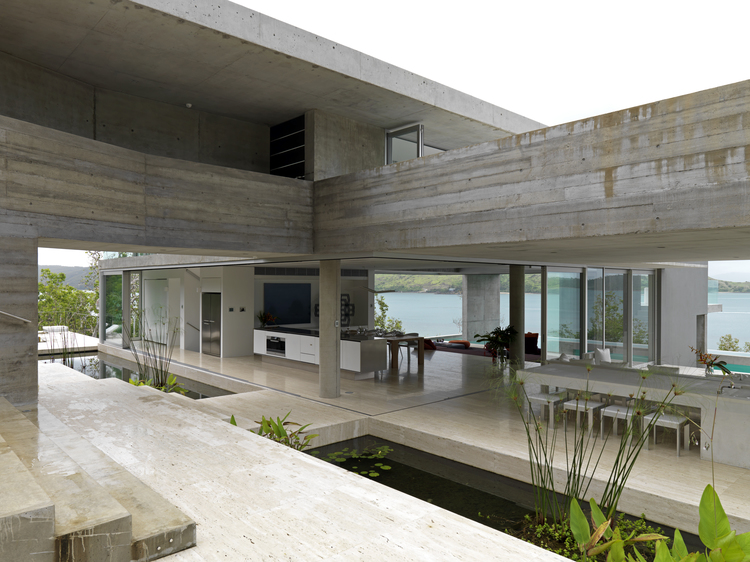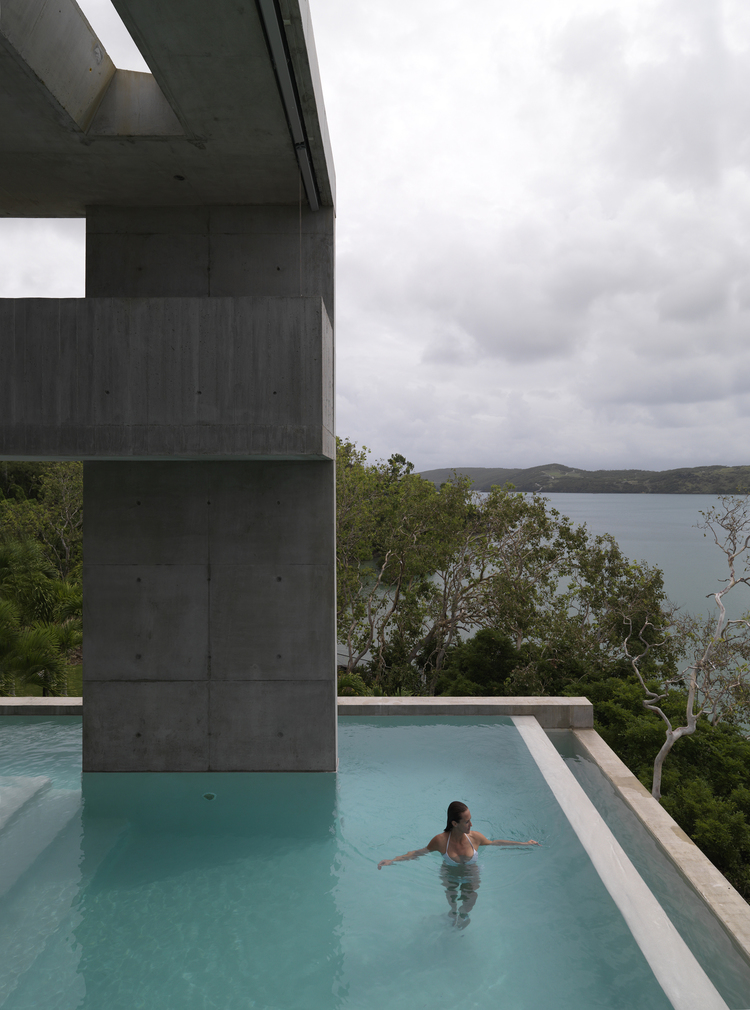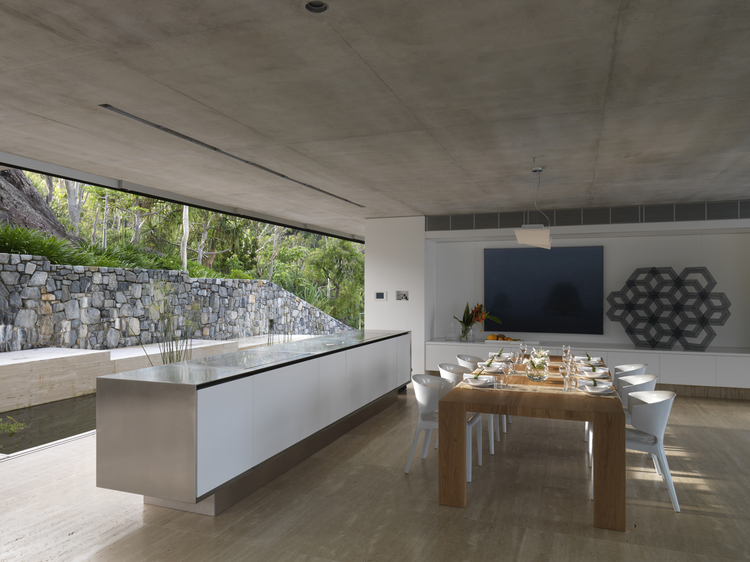Solis
by Renato D’Ettorre Architects

As a design practice, Renato D’Ettorre Architects aims to create evocative architecture which satisfies the human need for textural and tactile experience. Solis on Hamilton Island draws inspiration from its magnificent location and Mediterranean coastal architecture: simple, permeable volumes opening and unfolding, capturing distant views of water and land.
This site, within its luscious natural setting, brings the weather seasons into focus with the vegetation’s glorious display of colour, texture and flowers – nature’s constant reminders of life’s cycles. Remaining connected to these surroundings was one of the key elements driving the design of the house.
Terraces are fluid extensions of internal spaces capturing cooling breezes and allowing cross ventilation. Bedroom terraces frame magnificent views of water and garden, distant lands and the horizon, so that falling asleep or waking is never a mundane ritual. Special attention was taken designing the bathrooms: eliminating superfluous detail and relating to the natural surroundings imbues the spaces with a sense of well-being and purity that is invigorating for the body and stimulating for the mind.
Always connected to water, the interiors are sheltered and cool: swimming pools, reflection ponds and strategically positioned trickling waterfalls soothe both indoors and outdoors, as each rain droplet resonates through the spaces.
In contrast to this sense of tranquillity, equally critical to the design was to provide a high degree of safety to the occupants by integrating building regulations so that the house is able to withstand the destructive forces of tropical cyclones that are common in this region of Queensland.
Construction method and material selection was influenced not only by the climate but also the Client who had expressed preference for low maintenance materials on a sub-tropical site with extreme weather: long periods of hot, humid conditions and prolonged heavy rain during the wet season limit material lifespan. Another factor was regional Council’s limit on colours: white and primary colours were not permissible. For these reasons concrete became the primary material; utilising its eternal qualities of extreme resiliency, excellent thermal properties, the textural quality and hue of rough sawn timber boards echoing the trunks of gum trees and large grey weathered boulders on the site.
Further, concrete allows for a ready-made finish eliminating the use of render and paint as well as lending instant patina. Wall and floor finishes, such as polished concrete, unfilled honed travertine tiles and textured internal renders were selected for their durability and tactile qualities; the irresistible urge to experience the house bare-feet whilst enjoying the touch of the smooth, cool stone.
The design of Solis by Renato D’Ettorre Architects seeks to balance the human spirit by the enriching experience gained in re-connecting with nature through the simple act of observing the wonders of its ever-changing scenery and by harnessing its benefits: off-shore cool breezes, warm evenings, spectacular sunsets, lush vegetation and the beauty of tropical rainfalls.
The use of built-in furniture throughout ensured a more economical fit-out from which the client will continue to benefit in the future, as it is less costly to replace cushions as opposed to a complete range of sofas and armchairs. The guest bathrooms dispensed with tiles and utilised a textured render instead to avoid material cost. A further cost reduction was achieved by keeping the details to a bare minimum, thus reducing the need for additional materials and labour, for example, there are no drop ceilings, architraves, skirtings, cornices and painting is kept to minimum.
The architecture incorporates a number of passive climate controls, such as deep overhangs that shade the interior, natural ventilation, using bodies of water as cooling elements, collecting water using rainwater tanks and utilising the island’s recycled grey water for irrigation, massive concrete walls and green roofs. Interior wall and floor of cool stone finishes contribute to the reduction of the need for air-conditioning and thus minimising energy use. Polished concrete finish to the floors and off-form concrete finish to the walls were not only chosen for their tactile qualities, but also because concrete is an excellent material for absorbing heat whilst giving a cooling sensation when touched or walked on bare feet, reducing the urge to switch on the air-conditioning.
Combining architectural energy-saving design principles along with selection of materials such as off-form concrete and travertine floor tiles removes the need for other finishing trades and materials, requires no or very little on-going maintenance, stay resilient to the extreme weather conditions of the tropics avoiding regular repair and replacement thus maximising the building’s life span.
To view more Renato D’Ettorre Architects Inspired Architecture and Interior Design Archives head to their TLP Designer Profile.
Keep up to date with The Local Project’s latest interviews, project overviews, collections releases and more – view our TLP Articles & News.
Explore more design, interior & architecture archives in our TLP Archives Gallery.
![Book Flatlay Cover Front Transparent Trio[1]](https://d31dpzy4bseog7.cloudfront.net/media/2024/06/07080212/Book_Flatlay_Cover_Front_Transparent_Trio1.png)








































